
Turmoil in Transat Jacques Vabre
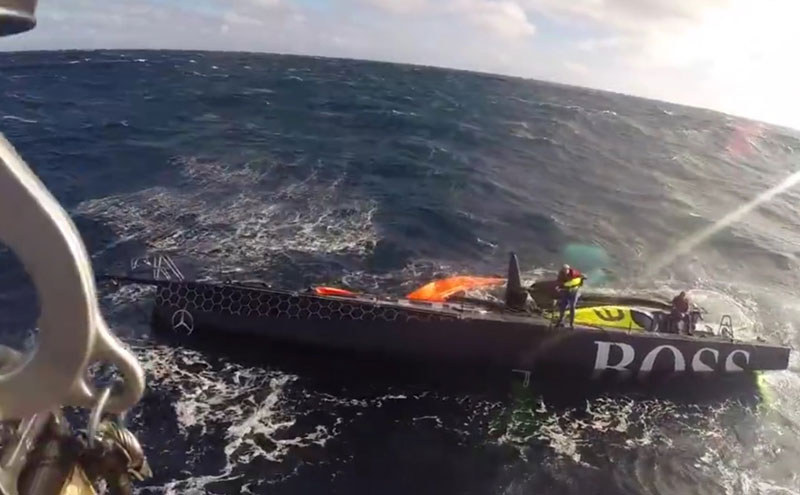
Taking place in the fall and sailing through the often-treacherous Bay of Biscay and across the Atlantic Ocean, the doublehanded Transat Jacques Vabre has long been known as one of ocean racing’s most challenging — and sometimes destructive — races. This twelfth edition of the TJV has become an instant classic. Two nasty depressions thoroughly wreaked havoc on the fleet to a degree well beyond predictions. Before the race and during the early stages, much of the sailing world watched with great anticipation as the five brand-new ‘foiling’ IMOCA 60s — by far the most advanced ocean racing monohulls ever built — made their debuts. With a race track that clears Cap Finisterre and then heads roughly due south for the Brazilian coast, the course is very reaching-intensive, and in theory should have benefited the new foiling monsters, which begin to achieve liftoff when the breeze is on the beam.
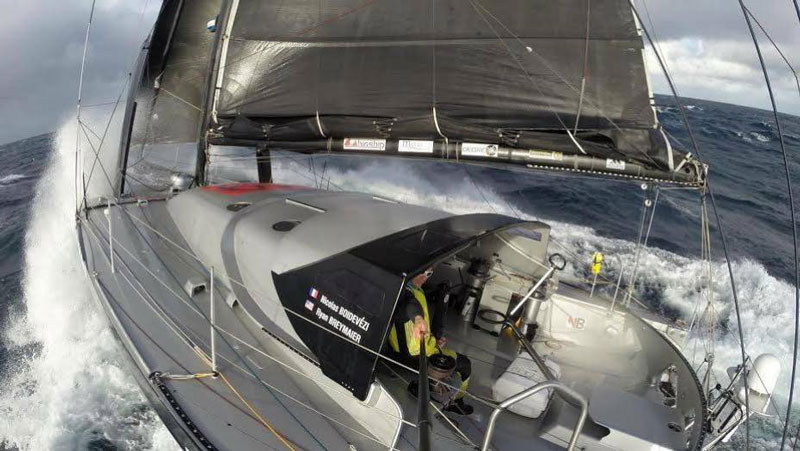
©Latitude 38 Media, LLC
One by one however, these brand-new machines began to suffer catastrophic failures. First, it was SAFRAN, which headed back to port with skipper Morgan Lagraviere explaining that they were taking on water near the daggerboard trunks that house the foils. Next was Edmond de Rothschild which returned with unspecified damage. Next up was a disheartened Jean Pierre Dick on St. Michel-Virbac, who reported significant structural damage and multiple broken stringers before putting into Madeira and retiring from the race.
Last and by far the most dramatic was Alex Thomson and Guillermo Altadill’s new Hugo Boss, which also sustained major structural damage and hove-to in hopes of carrying out repairs good enough to either continue racing or head to Spain. After Hugo Boss was rolled by a rogue wave, Thomson canted the keel to right the boat, which came back up without a mast. Hours later, the duo was rescued by the Spanish coast guard and delivered by helicopter to Spain, where the team is attempting to salvage the stricken yacht.
El Helimer 401 rescata a los dos tripulantes de un velero
El Helimer 401 rescató esta tarde a los dos tripulantes del velero Rockcliffe Bill II 98 millas al noroeste de A Coruña
Posted by Salvamento Marítimo on Saturday, October 31, 2015
Less than a week in, four of five new-generation VPLP-designed Open 60s have been knocked out of the race, while the fifth — Armel le Le Cléac’h’s Banque Populaire VIII — leads by a small margin as the IMOCAs approach the equator. Surely, the new side-mounted ‘mustache’ foils will be anything but an advantage in light air. Vincent Riou’s previous-generation PRB, the lightest Open 60 ever built and defending champion in this race, is currently breathing down Banque Pop’s neck, trailing by less than 7 miles as of this writing. Sailing an absolutely incredible race in third place are Yann Elies and Mini Transat ace Charlie Dalin on the two-generation-old Queguiner-Leucemie Espoir (Leukemia Hope), in Elies’ return to the IMOCA class after breaking his femur in the Southern Ocean during the 2008-09 Vendée Globe and being rescued by the Australian navy.
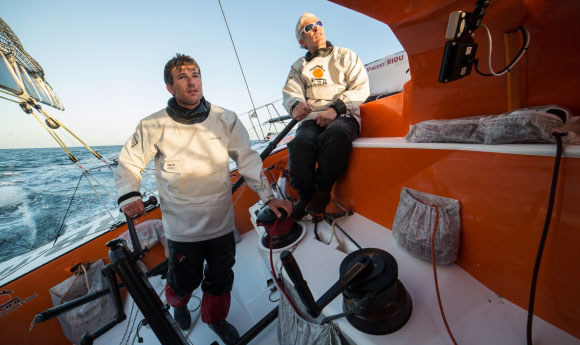
©Latitude 38 Media, LLC
The new headline-grabbing Open 60s aren’t the only boats to sustain mass carnage in this brutal TJV. Ten of the 20 starters have retired with damage, and that number is sure to grow as at least one more boat should drop out soon. The Class 40 fleet has seen just three retirements among its 14 starters, though two major contenders — Team Concise and Bretagne Credit Mutuel Elite — are among those three. La Conservateur and her legendary skipper Yannick Bestaven have a commanding lead in the Class 40s, while François Gabart’s revolutionary new maxi-multihull MACIF has been engaged in a thrilling battle with Thomas Coville’s Sodebo Ultim’ since the start.
Ha-Ha Safe and Sound in BSM
The Baja Ha-Ha fleet is safe and sound in Bahia Santa Maria after great sailing for much of the 260-mile second leg of the rally from San Diego to Cabo San Lucas.
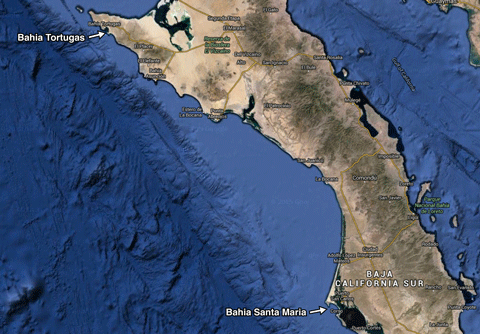
Spread out over 100 miles, the 111-boat fleet met a variety of conditions on the ocean between Turtle Bay and Bahia Santa Maria. Some boats saw up to 30 knots from the northwest or northeast, while others drew the no-wind card and had to motor part of the way. Crew aboard the mothership, Profligate, report that the 63-ft catamaran sailed about two-thirds of the way.
Fleet members are relaxing in sunny Bahia Santa Maria today, enjoying various activities including hiking, surfing, kayaking and paddleboarding. The sailors are looking forward to tomorrow’s big rock ‘n’ roll beach party sponsored by the local fishermen.
The final leg will begin at 8 a.m. on Wednesday, with boats trickling into Cabo on Thursday. Fair winds are predicted, with no tropical disturbances on the horizon.
Donna Lange Out of Africa
"One more milestone!" wrote Donna Lange in her sailing blog last week. "I am now past the Cape (of Good Hope) and Agulhas Point, the southernmost tip of Africa."
This is the first of the five great capes the 53-year-old grandmother, former RN, and Rhode Island-based singer-songwriter must leave to port on her quest to become the first American woman to sail singlehanded around the world via the traditional ‘clipper route.’
As we reported in ‘Lectronic on July 8, Lange departed Bristol, RI, on July 26 on her Southern Cross 28 Inspired Insanity on her second — you read right — solo circumnavigation. The first one, which ended in 2007, had stops though. This one has no stops and no outside assistance. At least that’s the plan.
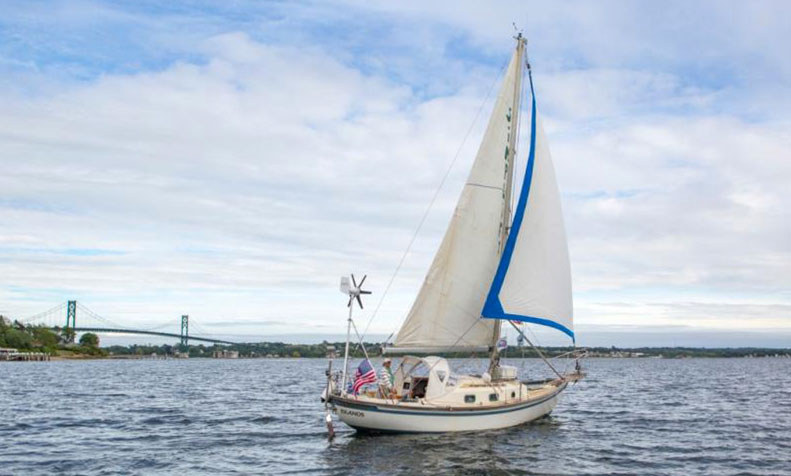
©Latitude 38 Media, LLC
And Lange, it seems, is pretty good at planning. For starters, she’s three months out and pretty much on schedule. And — as planned — she has gotten this far using only celestial navigation and an SSB for radio, weather and email communications, the better to be ‘in tune’ with the ocean. When not writing her blog, playing music, or tending to the boat, she’s also followed through with her plan to monitor sea life, sea birds, and even local radiation levels for various agencies.
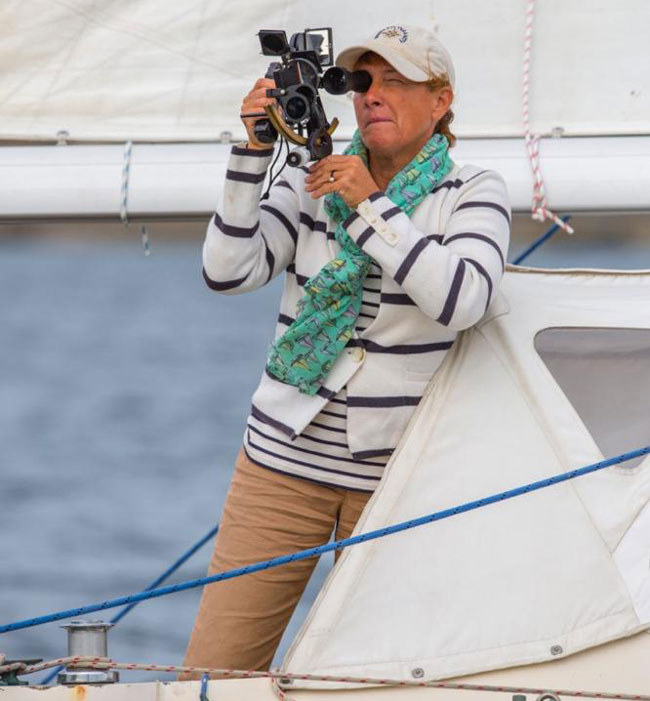
©Latitude 38 Media, LLC
She celebrated the Good Hope passage — which is roughly a third of the way around — with "smoked oysters for lunch and my favorite, chicken soup, for dinner."
Despite the currently cold and challenging conditions 500 miles south of Good Hope, Lange says she is happy to be sailing the southern latitudes during their soon-to-be summer. If all goes well, she will round the biggie — Cape Horn — sometime in March, and be back in Bristol by next May.
Lange’s life voyage is as fascinating as her sailing one. (She started sailing only 15 years ago, at age 38.) You can find more on that, and her current Twice Around campaign, at www.donna-lange.com and read her blog at www.sailblogs.com/member/sailtwicearound.
